#basilica de san marco
Explore tagged Tumblr posts
Text
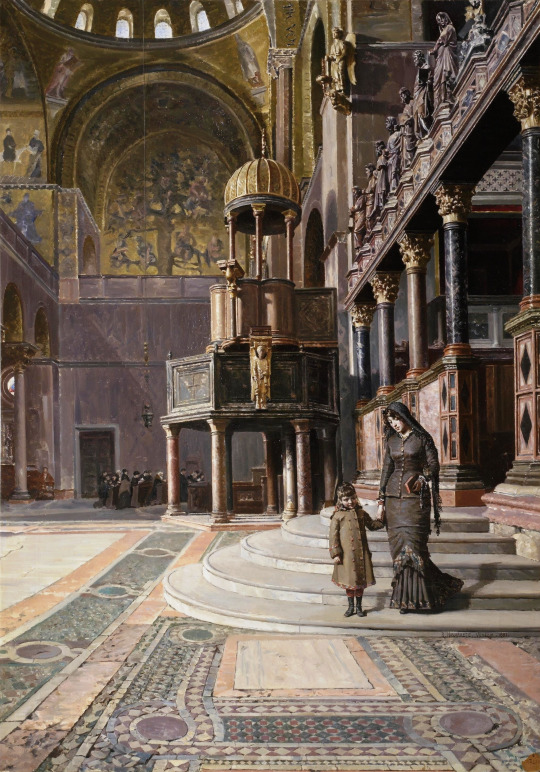
Ricardo María Navarrete Fos (Spanish, 1834-1909) En la basílica de San Marcos de Venecia, 1881 Museo del Prado, Madrid
#ricardo maria navarrete fos#spanish art#western civilization#european art#christian art#art#fine art#classical art#europe#european#oil painting#fine arts#mediterranean#europa#southern europe#1800s#en la basilica de san marcos de venecia#painting#church#christian#christianity#christentum#catholic#christian church#catholic art#roman catholic#mother and child#motherhood#basilica
249 notes
·
View notes
Text
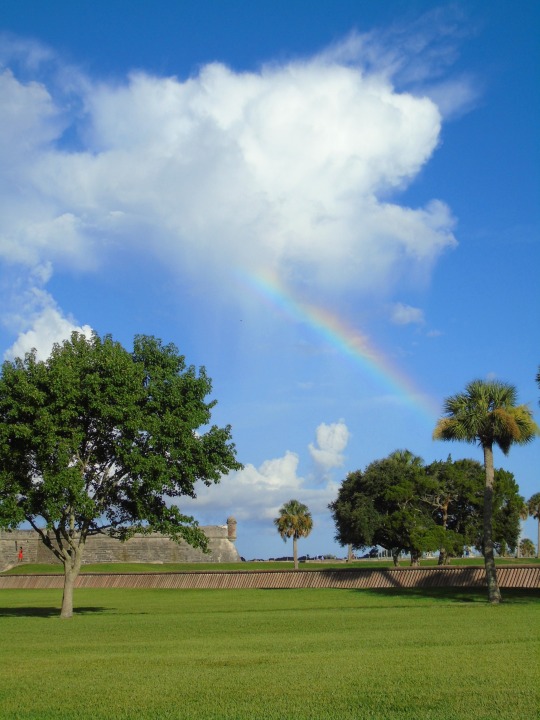

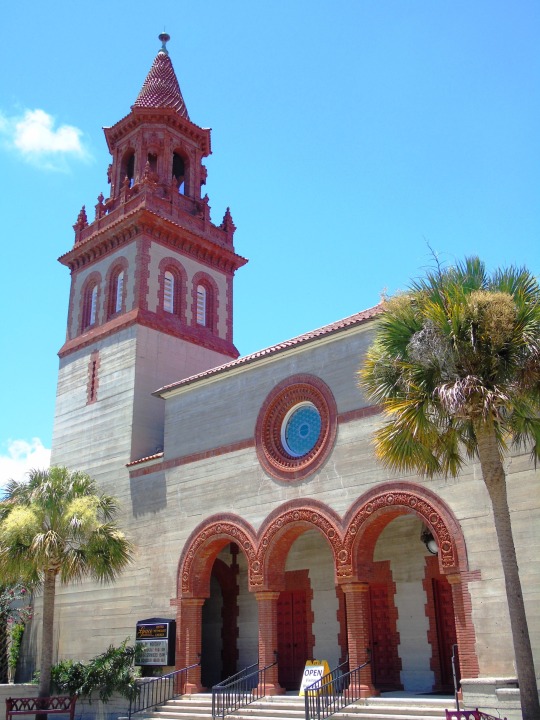

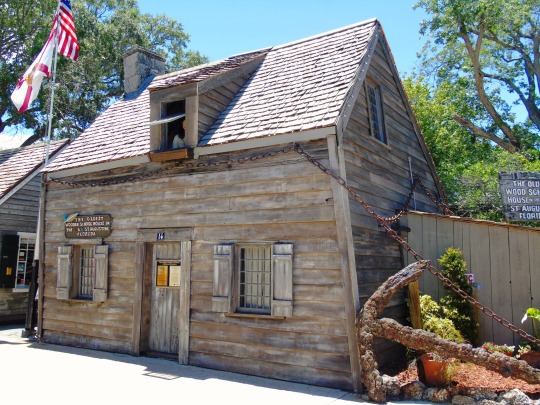
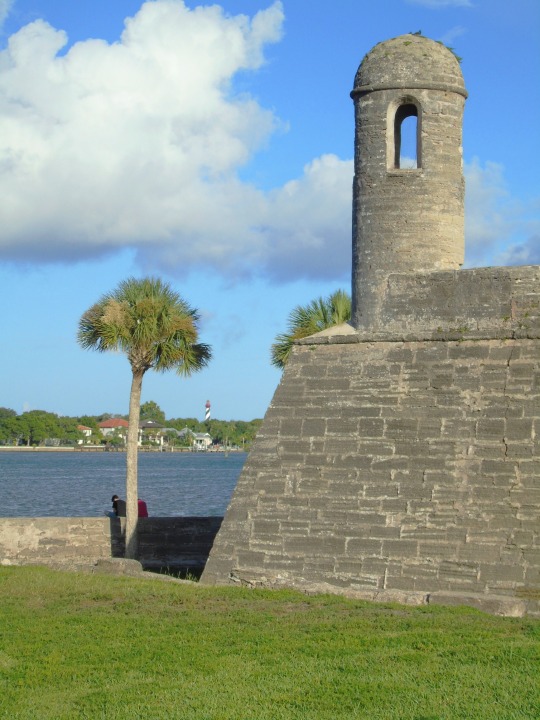
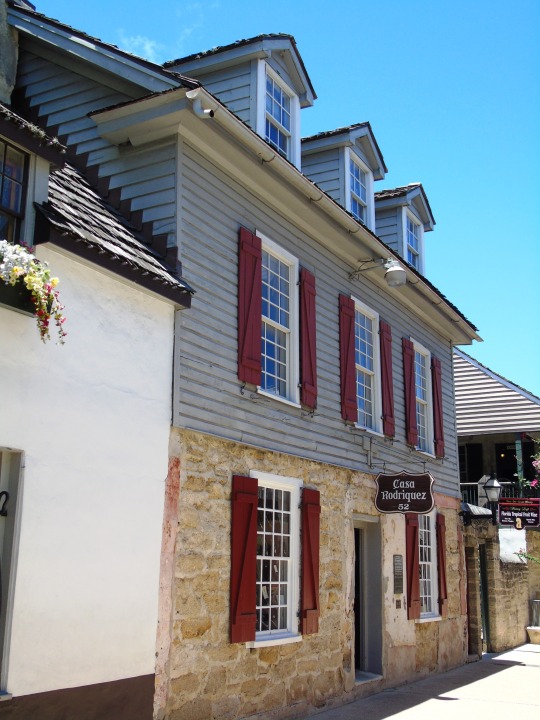
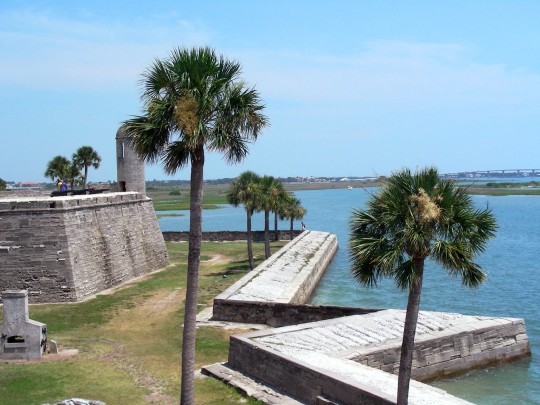
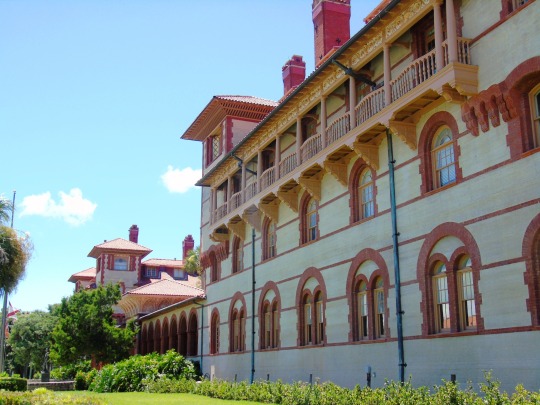
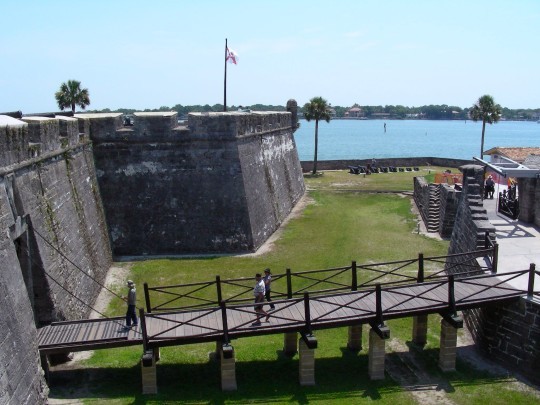
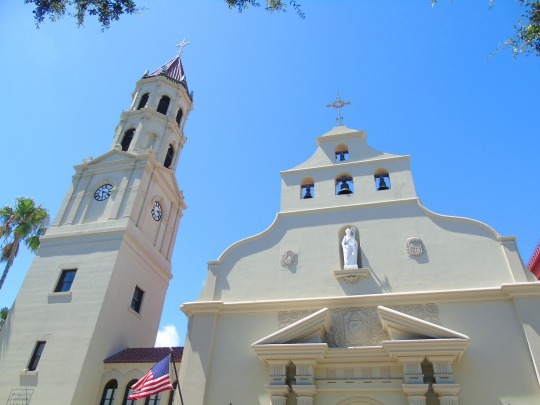
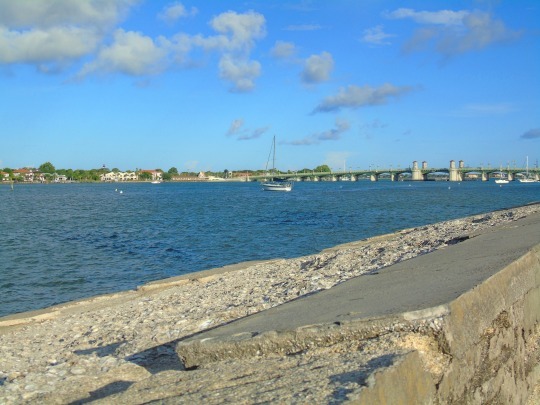

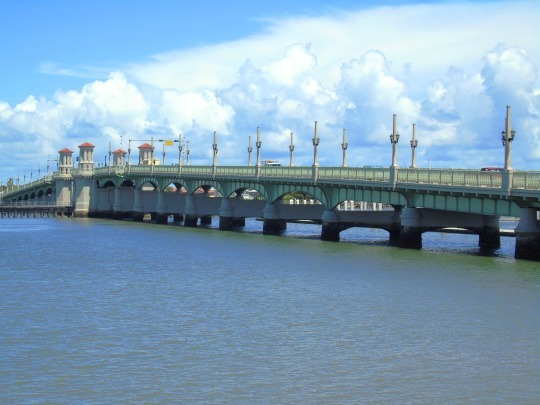
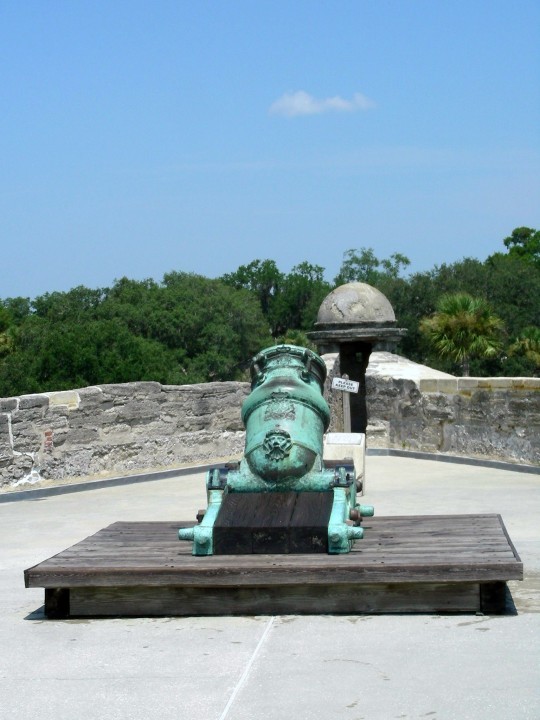
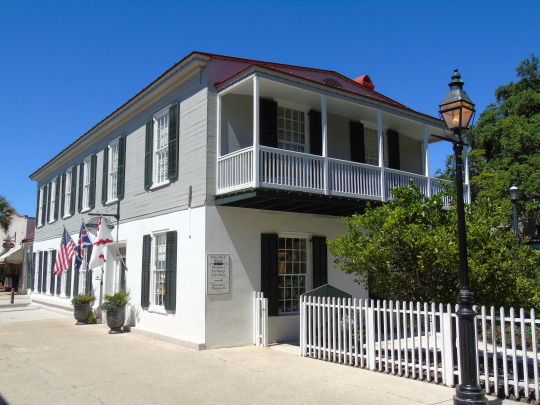
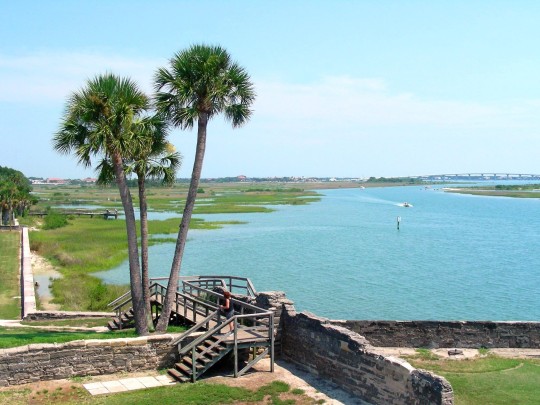
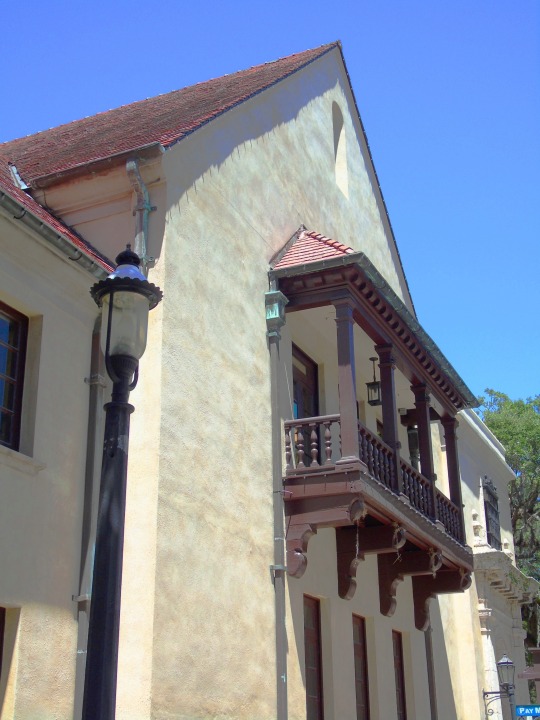
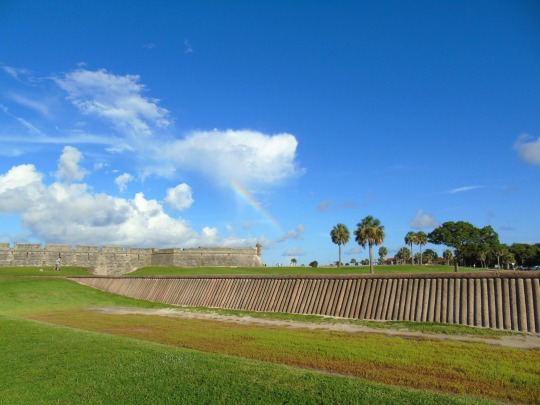
English colonists under the command of James Moore besieged Spanish St. Augustine during Queen Anne’s War on November 10, 1702.
#English colonists#besieged#Queen Anne’s War#St. Augustine#Florida#USA#10 November 1702#anniversary#US history#cityscape#summer 2016#2010#Castillo de San Marcos National Monument#Cathedral Basilica of St. Augustine#Flagler College#Matanzas River#landmark#tourist attraction#architecture#engineering#rainbow#street scene#travel#original photography#vacation
7 notes
·
View notes
Text

SAINT MARK'S BASILICA
#saint mark's basilica#basilica de san marcos#basilica di san marco#venezia italia#venice italy#venecia italia#europe#europa
28 notes
·
View notes
Text
Countries that are no more: Republic of Venice (697AD-1797AD)
The first in a series I hope to feature on providing high level overviews of countries that existed and were influential to history or obscure and lost to most memory in time. The first up is the Republic of Venice.
Name: Serenisma Republega de Venesia (Venetian). In English this translates to the state's official name The Most Serene Republic of Venice. Also referred to as the Venetian Republic, Republic of Venice or just Venice.
Language: The official languages were the Romance languages of Latin, Venetian & later Italian. The regional dialect of Vulgar Latin in Northeastern Italy known as Veneto was the original language of Venice. This evolved in Venetian which was attested to as a distinct language as early as the 13th century AD. Venetian became the official language and lingua franca of the everyday Venetians and across parts of the Mediterranean although Latin would still be used in official documents and religious functions. Overtime, modern Italian was spoken in Venice though the Venetian language remains technically a separate language in Italy's Veneto region and the surrounding areas to this day.
Minority languages across the republic's territory included various Romance languages such as Lombard, Friulian, Ladin, Dalmatian and non-romance languages such as Albanian, Greek & Serbo-Croatian.
Territory: The republic was centered on the city of Venice founded in the Venetian lagoon on the north end of the Adriatic Sea to the northeast coast of the Italian peninsula. It also included the surrounding regions of mainland northeast Italy in the regions of Veneto and Friuli and parts of Lombardy. This became known as the terraferma or the mainland holdings of the republic. It also possessed overseas holdings in modern day Croatia, Slovenia, Montenegro, Albania, Greece & Cyprus.
Symbols & Mottos: The main symbol of Venice was its flag which had the famed Winged Lion of St. Mark. This represented the republic's patron saint, St. Mark. Mark the Evangelist after whom the Gospel of Mark in the New Testament in the Bible is named. Mark's body and holy relics were taken by Venice and said to be housed in the Basilica di San Marco (St. Mark's Basilica) in Venice itself. Variations of this flag differed during times of peace & war. During peace the winged lion is seen holding an open book and during war flags depicted the lion with its paw upon a bible and an upright sword held in another paw.
The republic's motto in Latin was "Pax tibi Marce, evangelista meus" or in English "Peace be to you Mark, my evangelist."
Religion: Roman Catholicism was the official religion of the state but Venice did have minorities of Eastern Orthodox & Protestant (usually foreign) Christian denominations at times in its territory and it also had small populations of Jews and Muslims to be found in Greek and Albanian territories during the wars with the Ottoman Empire.
Currency: Venetian ducat and later the Venetian lira.
Population: Though population varied overtime for the republic due to a variety of factors such as war & changing territory and disease & its subsequent effects. There was rough population recorded of 2.3 million people across all of its holdings in the mid sixteenth century (circa 1550-1560). The vast majority of its population was found in the terraferma of northern Italy and the city of Venice itself with its concentrated population on the islands within the Venetian Lagoon. The Greek island of Crete and the island of (Greek speaking) Cyprus were the most populous overseas possessions of the republic's territory. The rest of the population was found its various holdings in the Balkans mostly along the Adriatic coastline.
Government: The republic followed a complex mixed model of government. Essentially it could be characterized as a mixed parliamentary constitutional republic with a mercantile oligarchy ruling over it in practice. It had no formal written constitution, and this led to a degree of evolution without exactly defined roles often in reaction to happenings in its history. The resulting government became more complex overtime as institutions became increasingly fragmented in their size, scope and duties, some almost obsolete but still retained and others not fully defined. Yet, the republic managed to function quite well for most of its history. It incorporated elements of oligarchy, monarchy & limited democracy.
It's head of state and government was known as the Doge which is akin to the term of Duke. Though this similarity of name ends there. The Doge was neither similar to a duke in the modern sense nor was it meant as a hereditary position. The doge was rather a lifetime appointment much like the Pope for the Roman Catholic Church. Furthermore, doges were elected by the ruling elite of Venice, namely its wealthy oligarchy merchant class. The doge didn't have well defined & precise powers throughout the republic's 1,100-year history. It varied from great autocracy in the early parts of the republic to increasing regulation and restriction by the late 13th century onward. Though the doge always maintained a symbolic and ceremonial role throughout the republic's history. Some doges were forcibly removed from power and post-1268 until a new doge could be elected, the republic's rule transferred to the most senior ducal counsellor with the style of "vicedoge". After a doge's death following a commission was formed to study the doge's life and review it for moral and ethical transgressions and placed judgment upon him posthumously. If the commission found the deceased doge to have transgressed, his estate could be found liable and subject to fines. The doge was given plenty of ceremonial roles such as heading the symbolic marriage of Venice to the sea by casting a marriage ring into the sea from the doge's barge (similar to a royal yacht). Additionally, the doge was treated in foreign relations akin to a prince. It's titles and styles include "My Lord the Doge", "Most Serene Prince" and "His Serenity". The doge resided in the ducal palace (Palazzo Ducale) or Doge's Palace on the lagoonfront in Venice next St. Mark's Basilica and St. Mark's Square.
While the doge remained the symbolic and nominal head of the government, the oligarchy remained supreme overall. The supreme political organ was the 480-member Great Council. This assembly elected many of the office holders within the republic (including the doge) and the various senior councils tasked with administration, passing laws and judicial oversight. The Great Council's membership post 1297 was restricted to an inheritance by members of the patrician elite of the city of Venice's most noble families recorded in the famed Golden Book. This was divided between the old houses of the republic's earliest days and newer mercantile families if their fortunes should attain them property ownership and wealth. These families usually ranged between 20-30 total. They were socially forbidden from marrying outside their class & usually intermarried for political and economic reasons. Their economic concerns were chief to the whole of the republic and most centered on Eurasian & African trade throughout the Mediterranean Sea's basin. Members of these families served in the military and eventually rose to prominent positions of administration throughout the republic.
The Great Council overtime circumscribed the doge's power by creating councils devoted to oversight of the doge or executive and administrative functions (similar to modern executive cabinets or departments) whereas the doge became more and more a ceremonial role. The also created a senate which handled daily legislation. They also created a Council of Ten set to have authority over all government action. Other bodies were formed from this Great Council and others overtime. This resulted in intricate and overlapping yet separate bodies which found themselves subject to limitations with various checks on virtually each other's power. Essentially running as committees or sub-committees with checks on another committee's powers. These bodies weren't always completely defined in their scope and overtime their complexity led to battles to limit other's power (with limited success) along with gradual obsolescence and sometimes slow grinding administration.
Military: The military of Venice consisted of a relatively small army and a powerful navy. The famed Venetian Arsenal in Venice proper was essentially a complex of armories and shipyards to build and arm Venice's navy. The arsenal in Venice has the capacity to mass produce ships and weapons in the Middle Ages, centuries before the Industrial Revolution allowed for modern mass production in economic and military applications. Venice's military was designed towards protecting it possessions both in Italy and its overseas territories. The primary concern was to secure Venice's trade routes to the rest of Europe as well as Asia & Africa. It faced opponents' overtime ranging from the Franks, the Byzantine Empire, Bulgarians to other Italian city-states, France, Austria, the Ottoman Empire and Barbary Corsairs along with European pirates in the Adriatic and Mediterranean. It played key roles as a naval transport in other powers including throughout the Crusades. It also played a key role in the infamous Fourth Crusade which culminated in the Sack of Constantinople in 1204 AD, an event which fractured the Byzantine Empire into a half-century of civil war between successor states before a weakened revival in the mid 13th century. The Byzantine Empire would linger until the 15th century when the Ottoman Empire finally conquered its last remaining portions. Many attribute this loss to in part to its weakness still resulting from that 1204 sack lead by Venice. The Venetian military would exist until the republic's end when The French Republic's Army of Italy under Napoleon Bonaparte conquered the republic, a conquest in which the Venetians surrendered without a proper fight.
Economy: Venice's economy was based largely in trade. Namely control over the salt trade. Venice was to control salt (preservative of food) production and trade throughout the Mediterranean. It also traded in commodities associated with the salt trade routes to Eurasia and Africa. These commodities could include other foodstuffs (grains, meats & cheeses), textiles & glassware among other items.
Lifespan: 697AD-1797AD. Though the exact founding of Venice itself hasn't been determined. It is traditionally said to have taken place in the year 421 AD. At a time when Roman citizens in northeast Italy were escaping waves of Germanic & Hunnic barbarian invasions that contributed to the collapse of the Western Roman Empire. The going theory is that these Romans evaded barbarian attacks by building their homes in the Venetian Lagoon by hammering wood stakes to form a foundation which sunk into the muddy shallows and petrified. Upon which they built their homes and created a cityscape marked by streets and canals interlaced. Venice remained a community of fishermen and merchants and was nominally under the control of the surviving Eastern Roman Empire (Byzantine Empire). It avoided barbarians overrunning the land but also was removed enough from Constantinople that it was relatively autonomous and became strategically important as a port. Other islands in the lagoon also banded together with Venice in a loose confederation of sorts by the 6th and 7th centuries which increased economic productivity and security for the city. The first doge was said to have been elected in 697 AD under the name Paolo Lucio Anafesto, though there is dispute about his historicity. Anafesto supposedly ruled until 717 AD. This is traditionally regarded as the foundation of the Republic of Venice.
Venice's third doge was Orso Ipato who reigned from 726-737 and he is the first undisputed historically recorded doge whose existence was confirmed. Orso also known as Ursus was known to strengthen the city's navy and army to protect it from the Lombard Germanic invaders who had overrun and ruled Italy by that time. Though nominally part of the Byzantine Empire, by 803, the Byzantine Emperors are said to have recognized Venice's de-facto independence. Though this view is disputed somewhat, it nevertheless remained virtually independent until its collapse in 1797.
Venice also partook in the slave trade of non-Christian European populations from Eastern Europe and transferred them to North Africa, selling them to the Arab and Berber (Moors) of the Islamic world.
As the 9th century progressed, the Venetian navy secured the Adriatic and various trade routes by defeating Slavic and Muslim pirates in the region. The Venetians also went onto battle the Normans who settled in southern Italy and Sicily in the 11th century.
Venice provided naval transports for Crusaders from Western Europe starting with the successful First Crusade.
The High Middle Ages (1000AD-1350AD) saw the wealth and expansion Venice increase dramatically. However, over this period Venice gradually came into mixed relations with its former ruler the Byzantine Empire. The Byzantine Empire endured corruption, civil war and foreign invasion which saw it alternate between periods of waning power and restored power. Venice provided the Byzantines with an increased naval force when needed and many trading commodities. In exchange for this, Venice was granted trading rights within Byzantine territory and a place within the "Latin Quarter" for Western Europeans in Constantinople. The Byzantine populace though calling themselves "Romans" having taken on the political & cultural institutions of the Roman Empire which lived on in the East long after the Western half's collapse, were in fact mostly Greek by ethnicity, language and culture. Their religion was the Eastern Orthodox or Greek Orthodox branch of Christianity which was often at odds with Roman Catholics of Western Europe. Resentment at the religious and cultural differences along with the economic displacement the Venetians and other Italian merchants from Genoa & Pisa had caused in Constantinople's maritime & financial sectors contributed to the 1182 "Massacre of the Latins" in which the Byzantine Greek majority of the city rioted and slaughtered much of the 60,000 mostly Italian Catholics living within the city. Thousands were also sold into slavery to the Anatolian Seljuk Turks.
This event lingered in Venice's memory as its trade in the city was reduced for awhile. Though trade resumed between the Byzantines and the West again shortly thereafter, the event soured the perception of the Greeks to Western Europeans. This along with a subsequent power struggle for the throne of the Eastern Roman Emperor fell into Venice & Western Crusader's hands in 1202. Looking to originally ferry Western Crusaders to the Levant against the Islamic Ayyubid Sultanate of Egypt & Syria. Events transpired that devolved into Venice conspiring under its doge Enrico Dandalo along with other Western leaders and a Byzantine claimant to the throne that resulted in the first successful sacking of Constantinople in 1204. The city was ransacked, some Greek citizens murdered by the Crusaders & classical works of art destroyed or looted (most famously the four bronze horses of St. Marks in Venice) and politically, the Byzantine Empire would be temporarily fractured between competing Greek dynasties while the Crusaders along with Venice created the short-lived Latin Empire, which controlled Constantinople and its environs while Venice also acquired Greek territories which it was to hold for centuries. Venice also came into conflict with the Second Bulgarian Empire at this time as its support of the Latin Empire of Constantinople encroached on the Bulgarian's land. Eventually by the mid 13th century the Latin Empire (never fully stable) collapsed, and the Byzantine Empire was restored until the mid-15th century but forever weakened as a result of the 1204 sacking of its capital.
Venice reached trade deals with the Mongol Empire in 1221. As the century wore on, it also engaged its rival in Western Italy Genoa in some warfare.
The 14th century is generally regarded as Venice at its peak as it faced down Genoa in a number of battles and came to be the most dominant trading power in the Mediterranean, though it was impacted by the Black Death plague. Nevertheless, into the 15th and even 16th centuries, it partook in a number of wars which saw it gain territory on the Italian mainland, establishing its terraferma domain.
By the 16th late 15th and into the 16th century new threats had emerged such as the Turkish Ottoman Empire. The Ottoman capture of Constantinople in 1453 is seen as the end of the Middle Ages as the last political vestiges of the Roman Empire vanished from the world stage. However, a number of Byzantine Greeks escaped on Italian ships during the conquest of the city and others escaped Greece in subsequent years. These refugees brought with them artistic and cultural heritages that reemphasized the classical forms of Ancient Greece and Rome and lead to the Italian Rennaisance in art & other forms of culture. Ideas which emphasized humanism and spread to elsewhere in Europe overtime.
While there was a cultural flourishing in Venice and elsewhere due to the Rennaisance. There was also the first signs of economic and political decline as well from the 16th century onwards. The Ottoman dominance in the Eastern Mediterranean meant the traditional trade routes to the East were cut off by an often-hostile Muslim power. Additionally, other maritime powers in the West namely Spain & Portugal had recently begun exploring the continents of South & North America and in time France, England & the Netherlands would join in them. This decline in Eastern trade and the newfound trade routes dominated by other European states in the Americas and Asia (by way of rounding Africa) would render trade with Venice gradually obsolete. Venice would still maintain what trade it could in the Mediterranean, but it also focused on production and placed increasing importance on its Italian mainland possessions rather than just its declining position overseas in Greek territories, including the loss of Cyprus to the Ottomans in 1571. Though the Venetian navy with other Christian powers won the notable naval victory against the Ottomans in 1570 at Lepanto.
It was also involved in the Italian Wars between various rival city states and the power struggle between the Papacy, France and the Hapsburg realms of the Holy Roman Empire and Spain.
Other factors that impacted the declining trade in the 17th century included an inability to keep up in the textile trade elsewhere in Europe, closure of the spice trade to all but the Spanish, Dutch, Portuguese, French and English and the Thirty Years War (1618-1648) which impacted Venice's trade partners.
Ongoing wars including a 21-year siege of Crete by the Ottomans saw further losses. Although Venice partook in the Holy League headed by the Holy Roman Empire (under Hapsburg Austria) which saw some minor temporary gains from the Ottomans in southern Greece before losing them again in the early 18th century.
War and loss of overseas territories along with a stagnant economy was slightly offset by a somewhat strong position in northern Italy. Nevertheless, its maritime fleet was reduced to a mere shadow of its former glory and it found itself sandwiched still between Austria and France. Over the rest of the 18th century, economic stagnation and social stratification remained prevalent while Venice remained in a quiet peace. However, the French Revolution reignited war in Italy and while Venice remained neutral, it would soon get caught up in events.
The Austrians and the Piedmontese (Italian) allies were beaten by the French Republic's Army of Italy headed by an up-and-coming general named Napoleon Bonaparte. Bonaparte and the French army crossed the borders of northern Italy into Venetian neutral territory to pursue the Austrians. Eventually half of Venice's territory was occupied by France and the remainder of the mainland was occupied by Austria. By secret treaty the French and Austrians were to divide the territory between themselves (Venice was consulted in the matter). Bonaparte gave orders to Venetian doge Ludovico Manin to surrender the city to French occupation to which he abdicated his power. The republic's Major Council met one last time to officially declare an end to republic on May 12th, 1797, after 1,100 years. Venice was placed under a provisional government and ironically the French looted Venice stripping it of artworks to grace the Louvre Museum in Paris along with the Arc d'Triomphe, taking the famed four bronze horses of St. Mark's to adorn the triumphal arch in Paris, the very same horses Venice had confiscated from Constantinople in 1204. It was a symbolic end to the republic, the irony of which did not escape commentators at the time. Following Napoleonic France's final defeat in 1815 the horses were returned to Venice and St. Mark's where they remain today. Venice itself was given over to the Austrian Empire.
The Republic of Venice has a historical legacy in terms of its economic accomplishments through control of trade and its innovative mass production of ships, armaments & trade commodities. It also holds a political legacy worthy of study given it was a unique and enduring polity for 1,100 years. One that maintained a complex and at times chaotic form of government that still managed to function and endure for centuries.

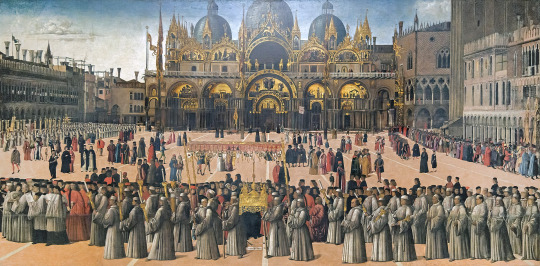
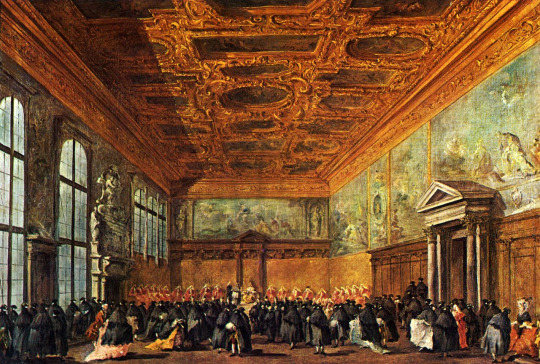
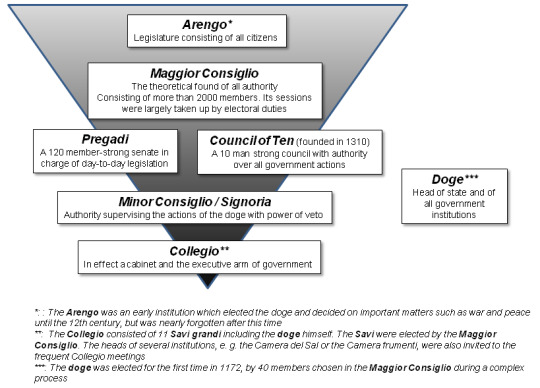
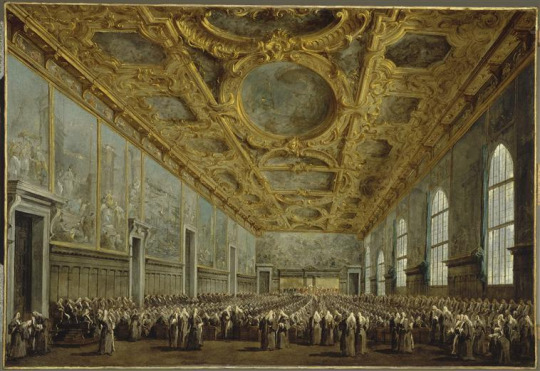
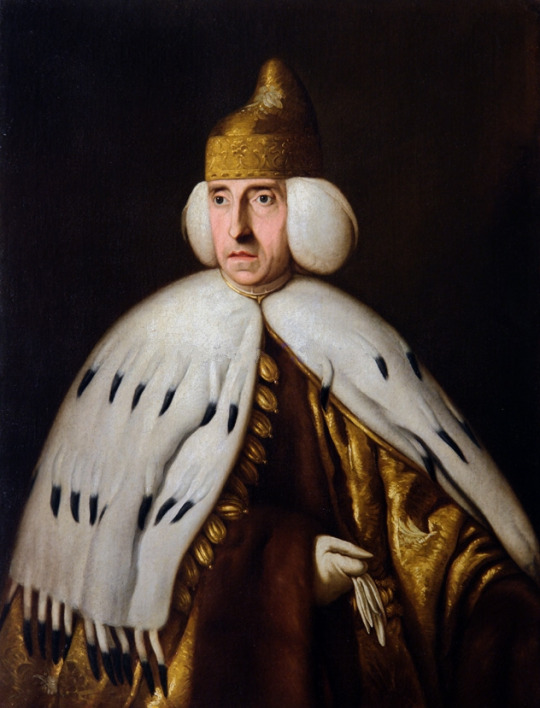
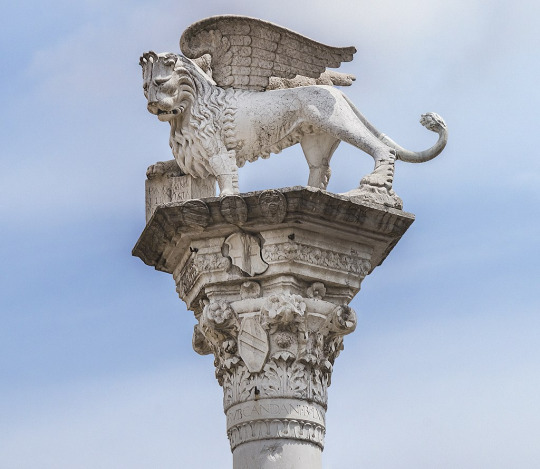

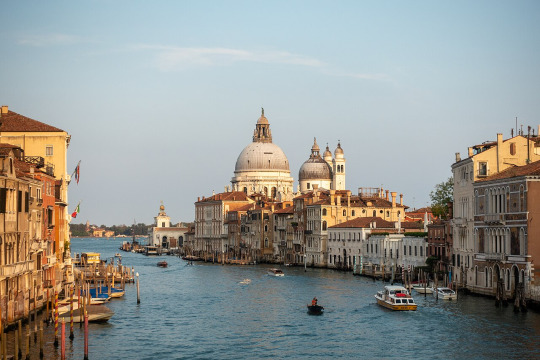
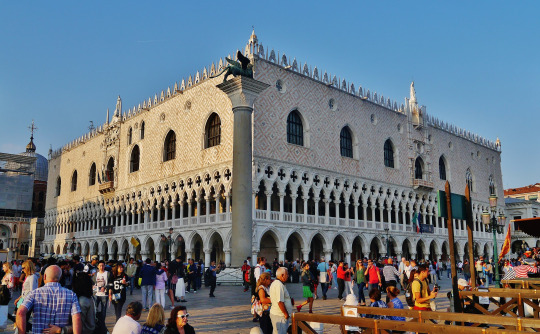
#military history#middle ages#venice#venetian republic#italy#politics#political history#trade#economics#governance#commerce#ottoman empire#spain#byzantine empire#napoleon#doge#republic
73 notes
·
View notes
Text
Basílica de S. Marco, s. IX
The Basilica of St Mark, 9th century
Basilica di S. Marco, s.IX

(English / Español / Italiano)
The Basilica of St Mark is the main church of the city of Venice, built to honor the relics of St. Mark the Evangelist.
The relics were stolen from Alexandria of Egypt in 828 AD by two Venetian merchants thanks to a stratagem: hidden in a basket of vegetables and pork.
The original church was progressively enriched with columns, friezes, marbles, sculptures, and gold brought to Venice on merchant ships coming from the east. A law of the Venetian Republic stipulated as a tribute that lucky merchants, after doing profitable business, should make a gift to embellish St. Mark's. Hence the variety of styles and materials.
The loot of the sack of Constantinople during the Fourth Crusade (1204), in particular, enriched the treasure of the basilica, which was thus completed in the 13th century together with the splendid golden mosaics decoration.
*****
La Basílica de San Marcos, la iglesia principal de Venecia, fue construida para honrar los restos de San Marcos Evangelista.
Los restos fueron robados en Alejandría de Egipto en 828, por dos comerciantes venecianos, gracias a un estratagema: escondidos en una canasta de hortalizas y carne de cerdo.
La iglesia original fue progresivamente enriquecida con columnas, frisos, mármoles, esculturas y oro llevados a Venecia en los barcos de los comerciantes que venían de oriente. Una ley de la República Veneciana imponía como tributo que los mercaderes afortunados, después de haber hecho los negocios provechosos, hicieran un regalo para embellecer San Marcos. De ahí la variedad de estilos y materiales.
El botín del saqueo de Constantinopla, en la cuarta cruzada ( 1204), en particular, enriqueció el tesoro de la Basílica que se terminó, finalmente, en el siglo XIII junto con la hermosa decoración de mosaicos dorados.
*****
La Basilica di San Marco è la chiesa principale della città di Venezia, costruita per onorare le spoglie di San Marco Evangelista. Le spoglie furono trafugate da Alessandria d'Egitto nel 828 da due mercanti veneziani grazie ad uno stratagemma: nascoste in una cesta di ortaggi e di carne di maiale.
La chiesa originaria fu progressivamente arricchita di colonne, fregi, marmi, sculture, ori portati a Venezia sulle navi dei mercanti che arrivavano dall'oriente. Una legge della Repubblica Veneziana imponeva come tributo che i mercanti fortunati, dopo avere fatto gli affari vantaggiosi, facessero un regalo per abbellire San Marco. Da qui la varietà di stili e materiali.
Il bottino del sacco di Costantinopoli nel corso della Quarta Crociata (1204), in particolare, arricchì il tesoro della basilica che fu così terminata nel XIII secolo assieme alla splendida decorazione a mosaici dorati.
photo: @_electronaut_
fuente: tesori_italiani
#venice#venezia#venecia#san marco#s.IX#9th century#13th century#s. XIII#arte bizantino#byzantine art
14 notes
·
View notes
Text
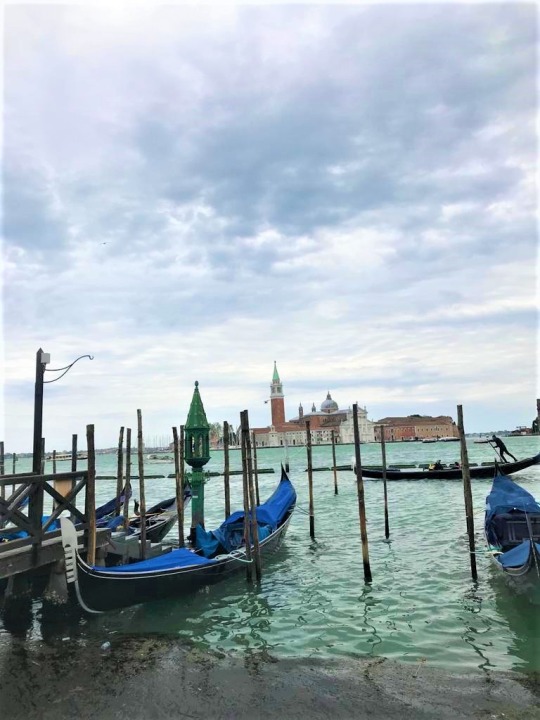



Venezzia, Italia
1 y 2 Atracadero bote 🛶
3. Basilica Santa Maria de la Salud
4. Plaza y Basilica San Marcos
15 notes
·
View notes
Text
ROMA

🌎www.yosoynomade.com
Roma es una ciudad mágica por muchas razones. Desde sus icónicos monumentos y ruinas hasta su exquisita gastronomía y vibrante energía, Roma atrae a turistas y viajeros de todo el mundo. Esta ciudad ofrece una sensación de historia y cultura que no se encuentra en muchos otros lugares, con su arquitectura impresionante y arte mundialmente famoso. Los visitantes de Roma pueden disfrutar de la belleza de la Capilla Sixtina, caminar por las calles empedradas del Trastevere y probar la deliciosa cocina italiana en los muchos restaurantes y cafeterías de la ciudad. En definitiva, vayas dónde vayas, sean los días que te quedes, en Roma siempre encontrarás algo sorprendente.
1. Coliseo Romano, la insignia de la ciudad
Es una obra maestra de la arquitectura romana y es famoso por su capacidad para albergar a más de 50,000 espectadores en su apogeo. Hoy en día, sigue siendo un importante destino turístico y un recordatorio del gran legado de la antigua Roma.
2. El Foro Romano y Palatino
Es un barrio histórico ubicado en la ciudad de Roma. Es conocido por ser uno de los siete montes de la ciudad y por albergar el Palacio del mismo nombre, residencia oficial de los emperadores romanos durante siglos.
3. Museos Capitolinos
Los Museos Capitolinos son una joya del patrimonio cultural de Roma. Ubicados en el corazón de la ciudad, en la colina del Campidoglio, estos museos albergan una amplia variedad de obras de arte, desde esculturas y pinturas hasta objetos arqueológicos y colecciones numismáticas. La colección incluye piezas famosas de Marco Aurelio, Caravaggio, Bernini, entre otros.
4. El Arco de Marco Aurelio
Es un monumento histórico ubicado en la ciudad de Roma, Italia. Fue construido en el año 176 d.C. en honor al emperador Marco Aurelio, quien lideró las operaciones militares romanas en el este de Europa y Asia Menor.
5. Basílica de San Pedro
Una de las iglesias más famosas del mundo y se encuentra en la Ciudad del Vaticano. Con una historia que se remonta al siglo IV, la basílica es un lugar sagrado para los católicos y atrae a millones de visitantes cada año. Además de su valor religioso, la basílica es famosa por su impresionante arquitectura, obras de arte y reliquias históricas.
6. Museos Vaticanos
Uno de los lugares más impresionantes de Roma. Situados en la Ciudad del Vaticano, los visitantes pueden admirar una gran variedad de arte y objetos históricos, desde la antigüedad hasta la época contemporánea. Entre las obras maestras que se pueden encontrar, destacan la Capilla Sixtina y los frescos de Miguel Ángel.
7. Castillo Sant'Angelo
Es un monumento impresionante en Roma que ofrece una vista panorámica de la ciudad. Originalmente construido como un mausoleo para el emperador Adriano en el siglo II, el castillo ha tenido muchos usos a lo largo de su historia, como fortaleza, prisión y museo.
8. Campo dei Fiori
Es una plaza histórica en el centro de Roma. Su nombre significa "campo de flores". Durante la Edad Media era un campo de hierba, y más tarde se convirtió en un mercado de flores y frutas. Hoy en día, es un lugar popular para los turistas y los lugareños por sus mercados, restaurantes y vida nocturna.
9. Piazza Navona
Es uno de los lugares más emblemáticos de Roma y tiene una rica historia. Antiguamente, se utilizaba como una pista de carreras de carros romanos. Actualmente, se encuentra rodeada de impresionantes edificios barrocos y una magnífica fuente central que se ha convertido en una de las más fotografiadas de Roma.
10. La Basilica di San Pietro in Vicoli
Es una joya escondida en el corazón de la ciudad de Parma. Este lugar de culto, que data del siglo XIII, es rico en historia y arte. Su fachada de mármol blanco es imponente y majestuosa, y en su interior hay valiosas obras de arte, incluido el famoso fresco de Correggio que representa a la Virgen y el Niño.
11. El Guetto Judío
Es un emblemático barrio de la ciudad de Roma, que guarda la triste historia de la segregación y persecución que sufrió la comunidad judía durante siglos. Con más de 500 años de antigüedad, este barrio es un lugar lleno de encanto, donde se puede respirar la cultura judía, visitando la sinagoga, el Museo Judío (si quieres conocer más a fondo la historia, no dudes en darte una pasada), la Fuente de las Tortugas, entre otros lugares.
12. El Gianicolo
También conocido como el Janículo, es considerado la octava colina de Roma. Este lugar histórico posee una gran cantidad de información sobre su pasado que vale la pena descubrir.
13. La Fontana di Trevi
Es una de las fuentes más famosas y magníficas de Roma. Es conocida por su impresionante escultura de Neptuno, que domina el centro de la fuente. Una razón por la que es tan popular es porque se dice que si lanzas una moneda sobre el hombro derecho en la fuente, volverás a Roma. Otro dato curioso es que la fuente es alimentada por uno de los acueductos más antiguos de la ciudad.
14. Trastévere
Es uno de los barrios más antiguos y pintorescos de Roma. Su fama se debe a su encantadora atmósfera medieval, con sus estrechas calles empedradas y sus edificios de color pastel. El barrio es conocido por sus restaurantes, bares y tiendas de artesanía, así como por sus iglesias y plazas históricas.
15. Plaza de España
Es uno de los lugares más visitados y fotografiados de Roma. Fue nombrada así por la construcción de la embajada española en el siglo XVII. La plaza se encuentra en el centro de la ciudad, al pie de la colina Pincio, y termina en la lujosa Vía Condotti. A saber, cerca de esta plaza encontrarás la tienda de Pompi, famosa por sus exquisitos tirmaisú.
16. Piazza del Papolo
Su historia se remonta al siglo XVI cuando se construyó la iglesia de Santa Maria del Popolo en su centro. La plaza ha sido testigo de importantes acontecimientos a través de los años, incluyendo festivales, conciertos y desfiles militares.
17. Priorato dei Cavalieri di Malta
O, Priorato de los Caballeros de Malta en Roma es un edificio histórico que se encuentra en la colina del Aventino. Fue construido en el siglo XVIII y ha sido utilizado como sede de la Orden de Malta. Es famoso por su arquitectura barroca y su impresionante fachada, que incluye una gran estatua de San Juan Bautista.
18. Termas de Caracalla
Las Termas de Caracalla es un monumento histórico en Roma que data del siglo III. Fue un lugar de baño público que incluía saunas, piscinas y salas de masajes, y podía albergar hasta 1.600 personas al mismo tiempo.
19. Tours gratuitos en Roma
Si estás planeando visitar Roma pronto y cuentas con bajo presupuesto, está es una excelente manera de conocer la ciudad. Estos tours te permiten explorar los sitios más emblemáticos de la ciudad sin costo alguno. Aquí te dejo uno de mis favoritos: Leyendas y misterios de Roma. Realmente lo disfruté.
20. Pasear en moto por la Ciudad Eterna
Último, pero no menos importante. Te puede resultar interesante pasear en moto, al estilo de Audrey Hepburn como en "Vacaciones en Roma". Es una excelente manera de explorar los lugares turísticos y los barrios menos conocidos de la ciudad, además de evitar el tráfico y el caos del transporte público.
Esta y más información la encontrarás en:
2 notes
·
View notes
Text
Undiscovered Gems: Exploring Covert Corners of America.
Undiscovered Gems: Exploring Covert Corners of America.
Hey there, fellow adventurers and hunters of the unique! Are you ready to exceed the tourist traps and uncover the concealed gems of the USA? Pack your feeling of experience, leave the crowds behind, and get ready to discover a few of one of the most captivating, wacky, and lesser-known locations throughout this substantial and varied country. From concealed towns to trick marvels, these spots guarantee a journey like no other. So, let's dive in and reveal the prizes waiting to be found in the lesser-known edges of the U.S.A.!
Sedona, Arizona - Red Rocks and Mystical Feelings
youtube
Nestled amongst looming red rock developments and lavish desert landscapes, Sedona, Arizona, is a covert treasure that enchants site visitors with its mystical and enchanting beauty. This enchanting town is a place for those seeking serenity and outside adventures, supplying an unique mix of all-natural grandeur and spiritual power that mesmerizes the soul.
Check out the transcendent landscapes of Red Rock State Park, where hiking trails wind with looming sandstone cliffs and concealed canyons. Admire the lively hues of Basilica Rock, a spiritual website thought to release effective energy and spiritual healing.
Discover the sturdy landscape on a thrilling jeep trip, revealing concealed caverns, old rock makings, and stunning views that will certainly leave you in awe. Complete your journey with a visit to among Sedona's famous vortex places, where the all-natural power of the planet is believed to advertise feelings of peacefulness and renewal.
Sedona is a location loaded with secret, beauty, and spiritual attraction-- an undiscovered prize all set to be found by those open to discovering its magic.

St. Augustine, Florida - A Treasure Trove of History and Ageless Attraction
Next off on our trip is the lovely and historic community of St. Augustine, Florida-- the earliest constantly occupied city in the USA. Tucked away on Florida's northeast coastline, St. Augustine is a bonanza of colonial history, spectacular architecture, and charming cobblestone roads.
Step back in time as you wander through the narrow alleys of the historical district, where centuries-old buildings and Spanish colonial architecture await at every turn. Discover the Castillo de San Marcos, a 17th-century fortress neglecting the sparkling waters of Matanzas Bay.
Experience the Eternal Youth Archaeological Park, where history and myth collide. Wander via dynamic yards, taste the waters thought to give eternal youth, and explore the past through interesting exhibits and vibrant efficiencies.
St. Augustine in Florida is an enchanting and attractive location that combines a rich history with seaside appeal, making it a delightful destination for visitors of every generation.
Mackinac Island, Michigan - Timeless Charm and Victorian Appeal
Now, allow's endeavor north to the charming Mackinac Island, Michigan-- a location where time seems to stall and Victorian beauty reigns supreme. Accessible only by ferry or personal boat, this car-free island is a relaxed resort from the pressure of modern life.
Step off the ferry and into a bygone period as you best places to visit in georgia usa check out the island's historic downtown, lined with charming stores, cafes, and vibrant Victorian estates. Rental fee a bike and pedal along beautiful coastal courses, absorbing views of the carbonated water of Lak
0 notes
Text
Appendix
Top 10 Museums
Louvre
Vatican Museum
Harry Potter Studio tour
London/Malmo Transport Museum
Prado
Academia
Lego House
Uffizi Gallery
Picasso museum
Glasgow Science Museum
Top castles/Palaces
Percy Castle in Alnwick (obviously)
El Alhambra
Madrid Palace
Alcazarin Seville
Neuschwanstein Castle
Roman Forum/Colosseum
Old Town Dubrovnic
Mont St. Michel
Buckingham Palace
Edinburgh Castle
Top 10 tourist errors
Not knowing we needed our passports to use our credit card in Swedish grocery stores (Matt and Becca)
Failing to reserve all our slots for venetian mask making (Becca)
Not realizing the hotel rooms in cadiz were 3 people max so getting a talking to and an upcharge from the front desk lady when trying to add nali man to the room (Matt)
Not knowing how to exit turnstiles in the London Underground (Becca)
Not keeping hands inside the vaporetto (children), not watching children to ensure their hands were kept inside (Becca only per vaporetto helmsman)
Walking in bike lanes everywhere (all)
Panicking and rushing on the train going on the train headed the wrong direction, and thus missing focaccia (Matt and Becca)
Not knowing how to cross streets everywhere (all)
Oli on shoulders in the Louvre (matt)
Getting on bus in split , trying to pay, getting told by bus driver it was the wrong bust, then getting off without paying and seeing it driving away with the rest of the family still on it (Matt)
Top Ten AirBnB/Hostels
Split, Croatia- Butt pool
Billund, Denmark – trampoline + Lego House
Huisnes-sur-mer, France
Plitvice Lakes, Croatia
Wilderswill (near Interlaken), Switzerland
Dubrovnik, Croatia
Rome
Naples (Airbnb much more so than the city)
London
Madrid
Top 10 Gummy Candies
Sour Rings
Fizzy Straws
Percy Pigs
Percy piglets (yes it’s different)
Coke Bottles
Sour Gummy glow worms (particularly the ones labelled in German)
Sour Gummy bears
Vegan Dinosaurs
Giant sour rainbow candy with nougat filling
Virtually anything else from Captain Candy
Top 10 Playgrounds
Gulliver’s Park, Valencia, Spain
Neighborhood playground with slide built into a hill, Wilderswill
Playground in Madrid near Marco’s restaurant (I think maybe it was in the Plaza de Espana
Theater themed playground, Malmo, Sweden
Dragon Playground near St. Beatus caves, Interlaken, Switzerland
Dragon-slide Playground, Paris
Buoy playground, Olso
Neighborhood pirate ship playground, London
Princess Diana memorial playground (peter pan), London
Dubrovnic basketball/soccer court
Honorable mention for anywhere henry played soccer, especially munich beer garden, elephant themed playground while waiting for bus in Lindau
Top 10 religious places
Sagrada Familia
St. peter’s basilica
Alhambra/Alcazar
Roman Synagogue
Sistine chapel
Pantheon
Cathedral of Seville
Cathedral of toledo (interchangeable)
Duomo
St. Marks, venice
Places we want to come back and visit
Ischia
Slovenia (lake bled)
Ronda + Seville, Spain
Northern Italian lakes/dolomites (including a longer return to Stresa Italy)
Grenoble France
French countryside (houseboat on canals?)
Ireland
Wales
Lofoten Island Norway
San Remo, Italy
More of Germany in general
Austria
Best Part/Favorite food England
Becca- Tower of London, Harry Potter Studio tour, Hamilton/Crumpets, Indian food, chips
Emily- Tower of London, Harry Potter Studios, Globe Theater/ Mango Boba
Buggy- Harry Potter Studio/fish and chips
Matt- Harry Potter Studio/sticky toffee pudding
Henry- Tottenham Hot spur Game/fish and chips
Oli- Our Airbnb and harry potter studio/Pizza
British Slang index
Right then = allright
Cheers = thanks/gretting
Buggy= baby stroller
Crisps= Chips
Chips = froes
Very nice = really good
Cherio, pip = “how you doing?”
Digestive = another type of cookie (dunk in tea)
Bin = trash can
Loo = bathroom
Football/footie= soccer
Fly tipping = unauthorized trash dumping/littering
Hiya = hi
Champion = sweet/great
Nappies = diapers
Fizzy candy = sour candy
No bother = no worries
Best Parts of France
Henry – PSG/Croissant
Emily- Dragon Slide/Croissant
Oli- the PSG game/chocolat croissant
Becca- Mt St Michel/croque Mossier
Buggy- climbing the Eiffel tower/ Baguete
Matt- Huisnes sur mer/train station croque mossieur
Best Parts of Spain
Becca- Seville, Valencia, the churches. Food: tapas
Oli- Gibraltar Monkeys/Paella Noodles
Henry Las Ramblas, Valencia/ Patatas Bravas
Emily- Gaudi + Bike riding in Valencia/ no favorite foods
Buggy- illegible (she interprets it as seeing the Flamenco Dancers)
Matt- Seville, Valencia, Sagrada Familia /Paella, Patatas Bravas, Horchata with fartones
Best Parts of Italy
Italian words- Ciao, uscita (exit), prego (you’re welcome)
Becca- Florence, Cinque Terre, Rome (loved David, St. Peter’s, hiking, Rafaels fresco in Vatican museum, Pieta. Food: Mozzarella, focaccia in Cinque Terre
Emily- Cinque Terre, Florence, Rome – Food: Foccacia, Pizza, Pasta
Oli- Pizza
Matt- cinque terre, Florence, Vatican museum, venice canals, Amalfi bus ride adventures. Food: mozzarella, pizza, focaccia in cinque terre
Buggy- cinque terre
Henry – Florence, cinque terre + Pizza
Best parts of Croatia
Emily- Pula, Plitvice Lakes, Boat
Henry- Pula, Butt Pool in Split, inflatable water park (pula)
Matt- renting boat in Dubrovnik, Slunj
Buggy- Slunj, bouncy house pula
Becca- Dubrovnik, Plitvice lakes
Oli- water bouncy house, pula
*Food* didn’t really experience much typical food but Matt + Henry say Burek, Emily/Buggy?matt also became Olive Oil snobs after learning to taste it in Pula
Best Parts of Switzerland
Becca- All of it! All the hiking
Buggy- the hut trip (+ice palace)
Emily- All of it
Henry- the huts
Matt- Ice Palace, huts, mountain view trail hikes
Best Parts of Germany
Henry - Going to the beer garden
Becca- Park in Munich, Fussen
Buggy- The night train
Emily- hot springs, castle, munich
Matt- Fussen, English Gardens Munich, Lindau hot springs
Best Parts of Denmark
Becca- Bilund!
Emily- Billund!, Copenhagen, Skiing, Tivoli, the lego home
Matt- Skiing on Copenhill + the Lego House
Oli- Tivoli + Lego House
Henry- The Lego House
Buggy- the Lego house and Tivoli
Best Parts of Sweden
Becca- hanging out with the Gordons
Emily- Malmo
Matt- 9 PM dip in the Baltic in Malmo
Oli- Playing with Henry Gordon’s cars
Henry- Malmo
Buggy- My new friend Isabela
Favorite Places overall
Edinburgh
Valencia
Sevilla
Huisnes-sur-mer
Madrid
Barcelona
Florence
Cinque Terre
Rome
Dubrovnik
Stressa, Italy
Billund, Denmark
Fussen, Germany
Munich
Becca’s book list
The dictionary of lost words
Choosing to Run
I’m Glad my Mom Died
The Great Believers
Solito
Romantic Comedy
All my rage
Hello, Beautiful
We Should Not be Friends
If I Never Met You
Page Boy
What Looks Like Bravery
Breath From Salt
Birnam wood
The True Love Experiment
0 notes
Text















St. Augustine was founded by Spanish admiral and Florida’s first governor, Pedro Menéndez de Avilés on September 8, 1565.
#St. Augustine#founded#8 September 1565#travel#original photography#vacation#tourist attraction#landmark#architecture#cityscape#USA#summer 2016#2010#Florida#Grace United Methodist Church#Castillo de San Marcos National Monument#Cathedral Basilica of St. Augustine#Matanzas River#Peña-Peck House#US history#white colonialism#Flagler College#anniversary
5 notes
·
View notes
Link
0 notes
Text
Explorati Farmecul Venetiei: O Vacanta de Vis in "Orasul Apelor"
Venetia - numita si "Orasul Apelor" sau "Regina Marii Adriatice" - este una dintre cele mai romantice si fascinante destinatii turistice din lume. Situata in nord-estul Italiei, aceasta metropola unica in lume este celebrata pentru canalele sale incantatoare, cladirile sale istorice si cultura bogata. In acest articol, vom explora ce puteti vizita in timpul unei vacante in Venetia pentru a va bucura la maximum de aceasta bijuterie a Italiei.
Piazza San Marco (Piata San Marco)
Piazza San Marco este inima istorica a orasului si un loc pe care trebuie sa-l vizitati in timpul sederii dumneavoastra. Piata este dominata de frumoasa Basilica di San Marco (Bazilica Sfantul Marcu) si de Palazzo Ducale (Palatul Dogilor). Puteti sa va plimbati in jurul pietei si sa admirati arhitectura splendida, sa hraniti porumbeii sau sa savurati o cafea intr-unul dintre celebrele cafenele.
Canalele din Venetia
Una dintre cele mai cunoscute caracteristici ale Venetiei sunt canalele sale. O calatorie cu gondola sau un vaporetto (barca de transport public) pe canalele sale este o experienta obligatorie. Puteti admira cladirile colorate de-a lungul canalelor, sa va plimbati sub celebrele poduri, precum Rialto, si sa va bucurati de atmosfera unica a orasului.
Basilica di San Marco (Bazilica Sfantul Marcu)
Bazilica di San Marco este unul dintre cele mai importante lacasuri de cult din Venetia. Cu o arhitectura impresionanta si o istorie bogata, acest loc sacru atrage mii de turisti in fiecare an. Interiorul basilicii este decorat cu mozaicuri stralucitoare si opere de arta remarcabile. Nu uitati sa vizitati si Muzeul San Marco si Turnul Campanile pentru o privire mai apropiata asupra istoriei orasului.
Palazzo Ducale (Palatul Dogilor)
Palazzo Ducale este un alt loc istoric important din Venetia. Acest palat a servit ca sediu al guvernului venetian si este o capodopera a arhitecturii gotice. Vizitand Palazzo Ducale, puteti explora camerele luxoase, salile de judecata si podurile inchisorii, precum si sa admirati lucrarile de arta expuse. De asemenea, puteti traversa celebrul Pod al Suspinelor, care ofera o priveliste panoramica a canalelor si a orasului.
Muzeul Guggenheim
Pentru iubitorii de arta moderna, Muzeul Guggenheim din Venetia este o destinatie de neratat. Acest muzeu gazduieste o colectie impresionanta de opere de arta contemporana si moderna, inclusiv lucrari de la artisti celebri precum Picasso, Kandinsky si Pollock. Cladirea in sine, cu arhitectura sa distinctiva, este o capodopera.
Podul Rialto
Podul Rialto este unul dintre cele mai faimoase simboluri ale Venetiei si o atractie turistica populara. Acest pod de piatra, care traverseaza Canal Grande, este cunoscut pentru magazinele sale traditionale, unde puteti gasi bijuterii, produse de lux si suveniruri locale. De asemenea, puteti admira privelistea impresionanta a canalului de pe pod.
Insula Murano
In apropierea Venetiei se afla insula Murano, cunoscuta pentru sticla sa suflata manual. Aici puteti vizita fabricile de sticla si puteti asista la demonstratii ale mestesugarilor locali. De asemenea, puteti explora micile ateliere de artizanat si puteti achizitiona bijuterii sau obiecte de decor din sticla unica.
Insula Burano
O alta insula pitoreasca din apropierea Venetiei este Burano, renumita pentru casele sale colorate si pentru dantela de inalta calitate produsa aici. O plimbare printre strazile pavate cu case colorate va va oferi o experienta unica si va va permite sa vedeti cum locuitorii locului isi pastreaza traditiile culturale.
Bucataria Venetiana
O vacanta in Venetia nu este completa fara a savura bucataria sa delicioasa. Puteti gusta specialitati locale, cum ar fi risotto cu fructe de mare, sardele in soar, cicchetti (aperitive venetiene) si tiramisu. Incercati si celebrele bauturi venetiene, cum ar fi spritzul Aperol sau Bellini.
Calatoriti pe Insulele Lagunei
Venetia este inconjurata de insule frumoase, iar o excursie de o zi pe insulele din laguna este o modalitate minunata de a va completa experienta. In afara de Murano si Burano, puteti vizita si insula Lido, cunoscuta pentru plajele sale, sau insula Torcello, cu biserica sa istorica si vegetatia luxurianta.
Evenimente si Festivaluri
In functie de perioada calatoriei dumneavoastra, puteti avea ocazia sa participati la evenimente speciale si festivaluri
0 notes
Text

Hospital SS Juan y Pablo / SS John and Paul Hospital.


La entrada triunfal del Hospital SS Juan y Pablo.(Scuola Grande di San Marco).
The triumphal entry of SS John and Paul Hospital. (Scuola Grande di San Marco).
(Español / English)
The Civil Hospital of St. John and Paul is a Renaissance building, once known as the Grand School of St. Mark, in the sestiere (district) of Castello. The Scuola is an ancient secular institution that chose a patron saint and to which middle-class citizens belonged, while the Scuole Grandi were joined by patricians. The Scuole Grandi were devoted to charitable works and public assistance and, thanks to their importance and generous donations, had a lot of liquid money, which they used to decorate their premises with works of art by famous artists, or were invested in real estate and loans. The prestige of the Scuole Grandi was such that, in certain moments of crisis, the Serenissima called on their help to raise the necessary funds to finance the wars in progress.
Over time, the Scuola Grande di San Marco had become so important that it took the name of the city's patron saint and built the most impressive of the Schools on Venetian soil.
In 1437, the Dominicans of the adjacent Basilica of Saints John and Paul granted a nearby area for the construction of the new building, which was devastated by a large fire on 31 March 1485, due to a candle left burning. Within twenty years the Scuola was rebuilt, under the direction of architect Pietro Lombardo, and the marble façade is a perfect example of the Renaissance style.
On the right side of the façade, two bas-reliefs by Tullio Lombardo (son of Pietro) adorn the entrance to the Chapel of Peace, where a Byzantine image arrived from Constantinople in 1349, believed to be capable of performing miracles. In the interior, the Sala dell'Albergo became one of the most spectacular examples of the Venetian Renaissance, thanks to works by Gentile and Giovanni Bellini among others.On the right side of the façade, two bas-reliefs by Tullio Lombardo adorn the entrance to the Chapel of Peace, where a Byzantine image arrived from Constantinople in 1349, believed to be capable of performing miracles. In the interior, the Sala dell'Albergo became one of the most spectacular examples of the Venetian Renaissance, thanks to works by Gentile and Giovanni Bellini among others.
Following the fall of the Republic in 1797, and the subsequent sacking by Napoleon, many of the works in the School were lost. In 1807 the confraternity was suppressed under Napoleon's rule, and the building became first an Austrian military hospital and later a civil hospital. Today it is known as the Civil Hospital, where Venetians and tourists visiting the city go for treatment, passing through the solemn atrium, with its series of columns and alternating tree-lined cloisters and new modern wings. Overlooking, visible especially at night, are the numerous cats that live there in peace and protection, in the heart of the city that has always loved them so much.Following the fall of the Republic in 1797, and the subsequent sacking by Napoleon, many of the works in the School were lost. In 1807 the confraternity was suppressed under Napoleon's rule, and the building became first an Austrian military hospital and later a civil hospital. Today it is known as the Civil Hospital, where Venetians and tourists visiting the city go for treatment, passing through the solemn atrium, with its series of columns and alternating tree-lined cloisters and new modern wings. Overlooking, visible especially at night, are the numerous cats that live there in peace and protection, in the heart of the city that has always loved them so much.
***
El Hospital Civil de San Juan y San Pablo es un edificio renacentista, antiguamente conocido como Escuela Grande de San Marcos, en el sestiere (barrio) de Castello. La Scuola es una antigua institución laica que elegía un santo patrón y a la que pertenecían los ciudadanos de clase media, mientras que a las Scuole Grandi se unían los patricios. Las Scuole Grandi se dedicaban a obras de caridad y asistencia pública y, gracias a su importancia y a sus generosas donaciones, disponían de mucho dinero líquido, que utilizaban para decorar sus locales con obras de arte de artistas famosos, o invertían en inmuebles y préstamos. El prestigio de las Scuole Grandi era tal que, en ciertos momentos de crisis, la Serenissima recurría a su ayuda para recaudar los fondos necesarios para financiar las guerras en curso.
Con el tiempo, la Scuola Grande di San Marco adquirió tal importancia que tomó el nombre del patrón de la ciudad y construyó la más impresionante de las Escuelas en suelo veneciano.
En 1437, los dominicos de la adyacente Basílica de los Santos Juan y Pablo cedieron un terreno cercano para la construcción del nuevo edificio, que fue devastado por un gran incendio el 31 de marzo de 1485, debido a una vela que se dejó encendida. En veinte años se reconstruyó la Scuola, bajo la dirección del arquitecto Pietro Lombardo, y la fachada de mármol es un ejemplo perfecto del estilo renacentista.
En el lado derecho de la fachada, dos bajorrelieves de Tullio Lombardo (hijo de Pietro) adornan la entrada a la Capilla de la Paz, donde se encuentra una imagen bizantina llegada de Constantinopla en 1349, a la que se creía capaz de realizar milagros. En el interior, la Sala dell'Albergo se convirtió en uno de los ejemplos más espectaculares del Renacimiento veneciano, gracias a obras de Gentile y Giovanni Bellini, entre otros.
Tras la caída de la República en 1797, y el posterior saqueo napoleónico, muchas de las obras de la Scuola se perdieron. En 1807 la cofradía fue suprimida bajo el dominio de Napoleón, y el edificio se convirtió primero en hospital militar austriaco y más tarde en hospital civil. Hoy en día se conoce como Hospital Civil, donde los venecianos y los turistas que visitan la ciudad acuden para recibir tratamiento, pasando por el solemne atrio con su serie de columnas y alternando claustros arbolados y nuevas alas modernas. Encima, visibles sobre todo por la noche, están los numerosos gatos que viven allí en paz y protección, en el corazón de la ciudad que siempre los ha querido tanto.
Fuente: plumplumcreation.com
#venice#venecia#venezia#ss. juan y pablo#Hospital#Scuola Grande di San Marco#Pietro Lombardo#Tullio Lombardo#renacimiento#renaissance
3 notes
·
View notes
Text
Exploring Two of Venice’s Less Visited Highlights

Tom Velken is a longtime Lafayette, California professional who guides the Viking Real Estate Group and delivers opportunistic investment pathways. An avid traveler, Tom Velken has had the opportunity to explore various historical destinations across Italy, from Lucca to Venice.
While the most popular spots in the latter city, such as St. Mark’s Square, can get mobbed year round, the city offers a myriad of less heralded sights that provide respite from the crowds. Among these is the Church of San Pantalon, a plain looking 17th-century building with an unfinished facade that stores a treasure trove of art inside. Among these are major works by Renaissance painters Paolo Veneziano and Paolo Veronese, as well as a remarkable overhead painting by Gian Antonio Fiumani. Measuring 443 square meters, the creator’s magnum opus vividly depicts Saint Pantaleon’s martyrdom and still stands as the world’s largest decorated canvas.
Another less heralded site is the Basilica de San Giorgio Maggiore’s bell tower, which is of similar dimensions to the more famous Saint Mark’s Basilica bell tower (Campanile di San Marco) and features similarly spectacular 360-degree views. Far from the center of Venice, the bell tower is situated on an island of the same name and is often photographed from across the water. The brilliant marble church’s interior includes three floors decorated with numerous Tintoretto paintings, as well as the early 18th century Sebastiano Ricci masterwork “Madonna enthroned with Saints.”
0 notes
Text
Week 7 in Europe!
After completing my study abroad, I spent a week in Italy with some friends! We took advantage of the high speed trains to spend a few days each in Venice, Genoa, and Rome.
In Venice, we explore the Biennale. This is the world fair for architecture. Firms from around the world design exhibits that tell the story of architecture in their country. For example, the University of British Columbia’s School of Architecture and Landscape Architecture created an exhibit reflecting the housing crisis Canada is currently experiencing.

Between the gondolier tour and San Marco’s Plaza, Venice was incredibly beautiful, and I’d love to go back!

Next, in Genoa, we enjoyed a lovely beach day. The high speed trains easily connect coastal towns like Portofino, Cinque De Terre, and Sestri Levante. We went to a beautiful beach that was tucked behind a cove in Sestri Levante.

The day started out a little cloudy, but the sun quickly peeked through and we enjoyed a great deal of time in the water!
In Rome, we saw so many of the attractions. Even though I’m not Catholic, my favorite was when we visited Vatican City. Between the gorgeous gardens to the art packed museums, there was so much to see!

It’s also worthwhile to visit St. Peter’s Basilica. This was one of the only buildings during my entire time in Europe that was free to enter. The sheer size of the Basilica is incomprehensible. It’s incredible to imagine that it was built in the 1500s!!

Even though there were so many people in the Basilica, the open space and size of the structure kept the building from feeling full or loud.
Overall, I had a fantastic time in Europe and specifically Denmark! I’m grateful I had the chance to really live in Europe. It was fascinating to see how our societies were similar and different, and I’m excited for when I can go back in the future. If you’re interested in entrepreneurship, I highly recommend this program and encourage you to explore Europe as much as you can during the six weeks here. There’s so much culture and history that it all takes your breath away!
1 note
·
View note
Text
5 weekend romantici in Europa per San Valentino

Weekend romantici per San Valentino: passeggiate mano nella mano...cene a lume di candela... occhi negli occhi! Ma dove tutto questo? Nelle più belle "città dell'amore" europee per un week end di San Valentino straordinario!
Weekend romantici per San Valentino
Un viaggio per un week end d'amore è il desiderio di ogni coppia per poter trascorrere qualche giorno per "festeggiare" San Valentino all'insegna del romanticismo più totale.
Scegliere l'Europa per San Valentino
Passare il giorno di San Valentino in un romantico viaggio è un sogno incantevole che ogni innamorato dovrebbe provare: è un'occasione particolare in cui "vivere" città nuove all'insegna dell'amore. L'Europa, come meta particolare per un giorno speciale, è la scelta giusta...
5 città romantiche in Europa per il weekend di San Valentino
L'Europa, offre tante possibili destinazioni romantiche, che lasceranno incantati gli sguardi innamorati. Vediamo insieme le città più belle: - Parigi (Francia): La Ville Lumiere è la città dell’amore per eccellenza (quella che non delude mai)! In questa bellissima città, le coppie, non resteranno mai scontente. La Torre Eiffel, le passeggiate lungo la Senna e i Giardini di Versailles, visitare Louvre, fare una mini crociera al tramonto sul fiume, le cene intime nei piccoli locali del Quartiere Latino sono puro romanticismo. Andare al Ponte des Arts (simbolo dell’amore eterno) dove si potranno ammirare sulle ringhiere i lucchetti lasciati dagli innamorati di tutto il mondo che raccontano le loro storie d’amore. Inoltre, attraversando il ponte pedonale, si può vedere con la Senna ed i monumenti parigini. Esperienza romantica da non perdere; - Venezia (Italia): gli scorci romantici, i canali, le gondole, i palazzi gotici... A Venezia si può fare una fuga romantica perchè è la città dell'amore con A maiuscola. Qui si possono visitare la Basilica di San Marco, i vicoli nascosti, salire sulla cima del Campanile per ammirare un panorama fantastico, farsi un giro in gondola al tramonto è un'esperienza da perdersi (è il massimo del romanticismo se si visita Venezia), a seguire una cena romantica sul Canal Grande che renderà il giorno di San Valentino ancora più speciale. Si deve assolutamente visitare l cuore pulsante di Venezia, Piazza San Marco (per eccellenza la zona più romantica della città per la magia che emette guardando la Basilica di San Marco e la Torre dell’Orologio). Una passeggiata serale in piazza, con il sottofondo della musica, renderà questo viaggio indimenticabile; - Vienna (Austria): si potranno visitare giardini meravigliosi, palazzi importanti (Palazzo di Schönbrunn) e vedere carrozze trainate dai cavalli. Vienna è una città particolare per quanto riguarda l'amore ed il romanticismo perchè ricorda l'amore fra la principessa Sissi e Francesco Giuseppe. Si deve visitare l’Opera di Stato di Vienna, andare a passeggiare nei giardini del Belvedere, concludere la giornata nel Café Central per gustare una fetta di torta Sacher e poi, assistere a un concerto di musica classica, al Musikverein; - Bruges (Belgio): è una città che sembra uscita da una fiaba adatta per una "fuga d'amore". Qui, gli innamorati, potranno vedere le case a graticcio, le strade acciottolate ed i canali pittoreschi, le strade del centro storico. Visitare Piazza del Mercato e la torre del Belfort (si può ammirare la città). La sera, si potrà fare anche una mini crociera, lungo i canali e poi una cena in un ristorante romantico. Il tutto per ricordare la bellissima città di Bruges e l'esperienza di San Valentino in questa bellissima città; Praga (Repubblica Ceca): città caratterizzata dalle torri gotiche, dalle case con i tetti rossi e dai ponti romantici che attraversano il fiume Vltava. Si potrà passeggiare sul Ponte Carlo al tramonto, e visitare Piazza dell'Antico Municipio dove si potrà ammirare l’orologio astronomico. Si potrà anche trovare un'ottima cucina e, quindi, degustare piatti, vini ma anche caffè speciali in bar e ristoranti locali. ati con i quali brindare all’amore!
Il momento della scelta della meta
Scelta la meta? Bene... è arrivato il momento di partire per questo bellissimo weekend in un giorno particolare com'è quello di San Valentino per brindare all'amore....Auguri! Read the full article
0 notes